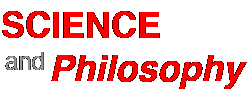Reading on: Neuroscience and self
Churchland, Patricia Smith Brain-Wise: Studies in Neurophilosophy The MIT Press, Cambridge, MA 2002 [abstract – 675 words]– the construction of a self-concept
Evolutionary biology suggests a very general answer to the question of why brains might construct a se1f-concept: it plays a role in the neuronal organization used to coordinate movement with needs, perceptions, and memories. Such coordination is essential to an animal’s survival and well-being. Coordination of functions ensures that inconsistent behaviors — fleeing and feeding, for example — are not attempted at the same time. For organisms with high-level cognition, self-representational capacities help us to think about the future, make useful plans, and organize knowledge.
We use the concept “self” in various ways. Frequently we use “self” to mean body, as in “I cut myself”; on other occasions, we mean to distinguish self from body, as when you are exhorted, for example, to “talk to yourself.” This ambiguity in the word “self” rarely causes misunderstandings, since we share rich background knowledge concerning when the word “self” does and does not refer to the body.
In conversation about the self, metaphors are the standby. Sometimes we use object metaphors, as when we say we pushed ourselves to finish, pulled ourselves together, or tied ourselves in a knot. On the other hand, when we say “I deceived myself” or “I talk to myself,” the person metaphor is invoked.
Sometimes the self is conceived of as a project, for example, when we undertake self-improvement or self-discipline. Sometimes one’s self is analogized as a process, such as becoming mature or wise.
Thus juxtaposed, these commonplace metaphors are strikingly diverse. What the metaphorical language suggests is that the self is not a thoroughly coherent, single, unified representational scheme about which we have thoroughly coherent, unified beliefs. Rather, the self is something like a squadron of capacities flying in loose formation. Depending on context, it is one or another of these capacities, or their exercise, to which we refer when we speak of the self
The key to figuring out how a brain builds representations of “me” lies in the fact that first and foremost, animals are in the moving business; they feed, flee, fight, and reproduce by moving their body parts in accord with bodily needs. If an animal’s behavior is haphazard or incoherent, the animal tends not to live long enough to reproduce. Consequently, an overarching demand on any nervous system is that it appropriately coordinate the body: its movable parts, its needs, its stored information, and its incoming signals. This demand is a powerful constraint on the evolution of neural organization. The smooth performance of any bodily activities requires tightly timed coordination of spatially dispersed muscle cells.
Coordination can only be performed by neurons, since there is no intelligent, extraneuronal “mini-me” inside who puts it all together. The intelligence of the system has to emerge out of the patterns of neuronal connectivity, the response properties of particular types of neurons, the activity-dependent modifiability of neurons (learning), and a neuronal reward system for strengthening neuronal connectivity when things go well and weakening connectivity when they go awry.
By making some effects pleasant and some not, the nervous system directs the animal’s choices. Emotions are the brain’s way of making us do and pay attention to certain things. That is, they are assignments of value that direct us one way rather than another, and they seem to have a role in every aspect of self-representation. Hunger can make us feel so desperate as to banish all thought of anything but food. Satisfaction is felt after feeding. More generally, self-preservation is underpinned by powerful feelings.
As neuroscientists have emphasized, this part of the system probably plays a role not only in emergency situations, but also in providing assignments of hedonic value in more humdrum categorizations, as when objects and events are classed as desirable, nasty, familiar, novel, safe, dangerous, and what have you. If you come into a shed and encounter a nasty smell, it will be recognized first and fundamentally as dangerous, as the basic fear circuits respond, well before the cognitive niceties get deployed and long before “cool” reason kicks in for impulse control.


